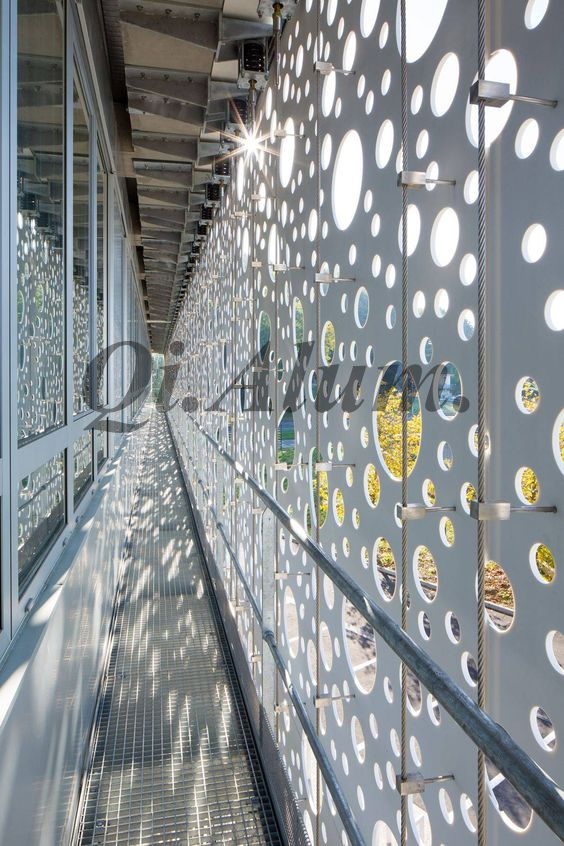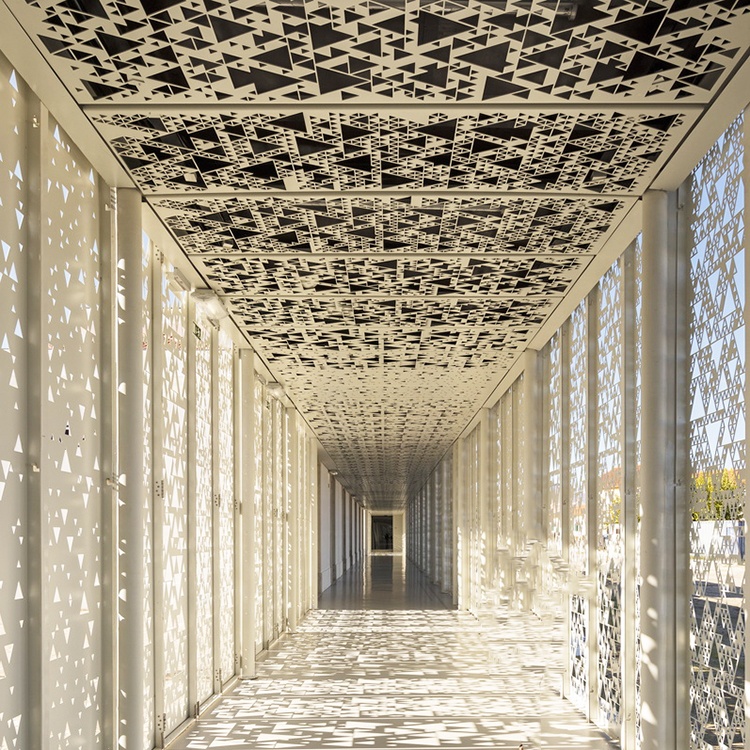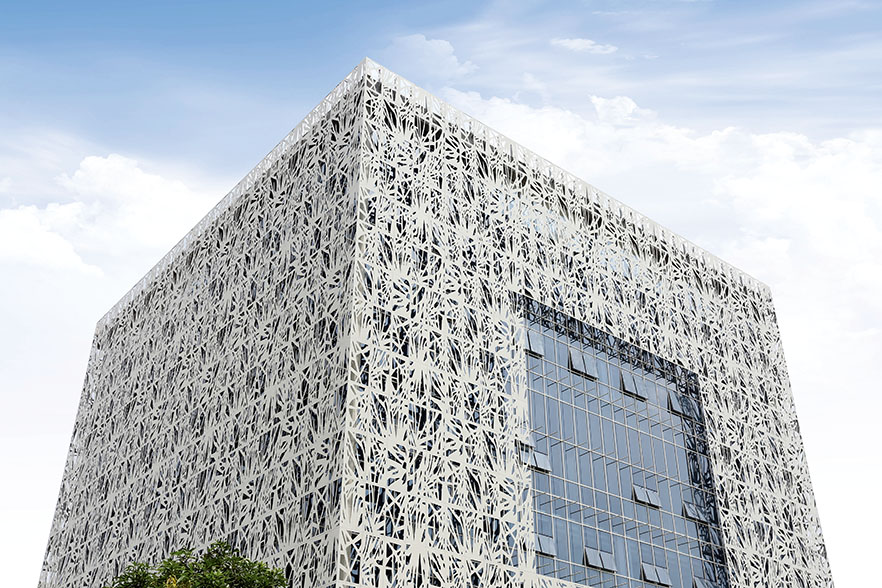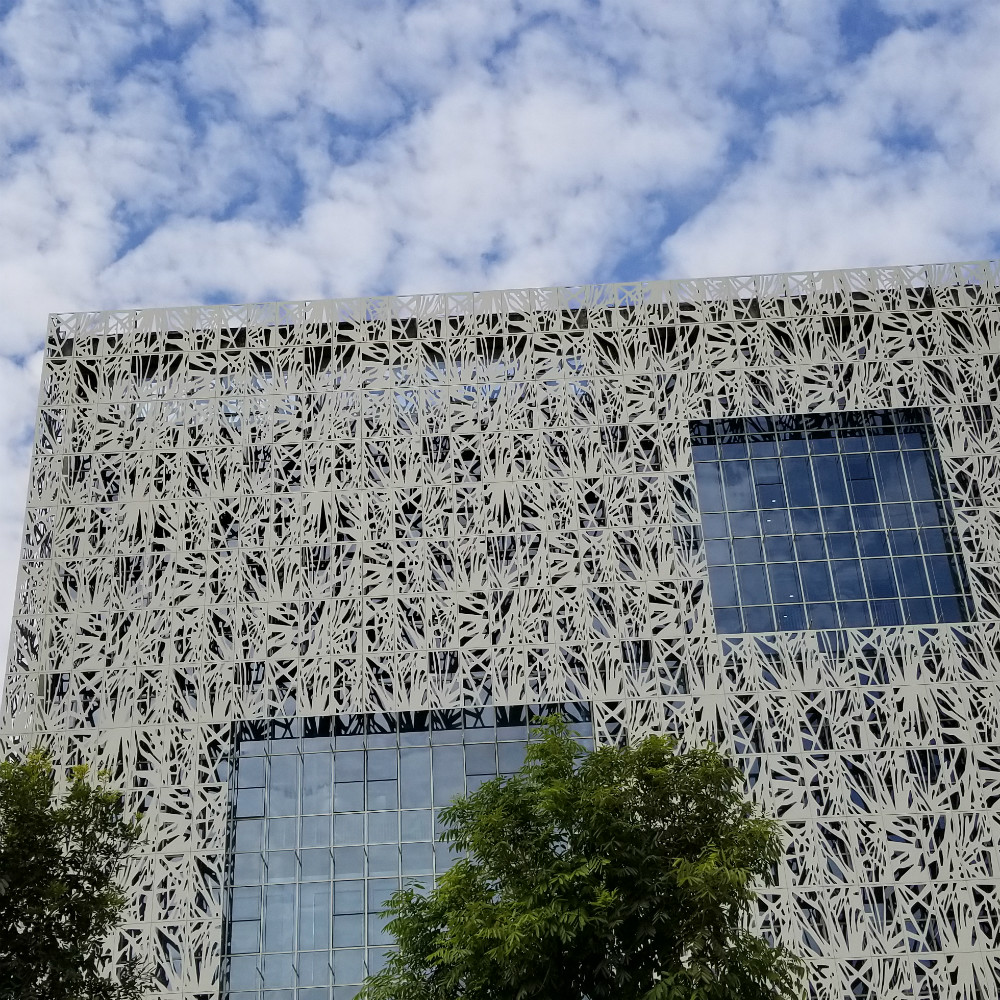FOSHAN QI ALUMINUM DECORATIVE MATERIALS CO.,LTD
Shiquan Tiekeng Industrial, Nanhai Area, Foshan, Guangdong Province, China
0086 13542961174
info@aluminum-panel.com
0086 13542961174
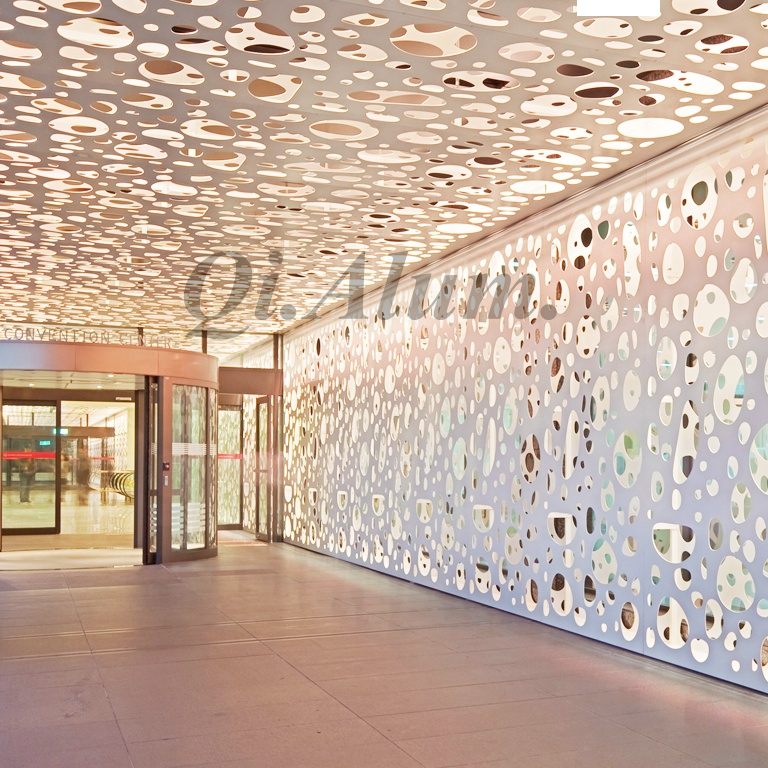
Perforated metal plate, as the name suggests, is based on a variety of metal plates as the base material, through mechanical punching, CNC cutting and other modern processing technology, the plate according to a certain law of various holes, forming a special texture texture or pattern. After metal plate perforation can also be according to the need for a variety of different surface treatment, such as plating, spraying, wire drawing, etc.
Early perforated plate with mechanical stamping processing, can only make a relatively regular hole, with the development of numerical control technology and plasma, laser, water knife and other cutting technology, now the perforated plate can be as digital engraving as any pattern.
Outdoor panels generally use aluminum alloy plate, copper (alloy) plate, stainless steel plate, weatherproof steel plate and other plates with a certain thickness and stiffness as the original plate, and aluminum alloy plate is most used in the building skin.
When the perforation size and perforation rate is higher, the stiffness of the plate is reduced, and it is necessary to set a reinforcing rib behind the panel, and the outer vision is likely to see the rib shadow, so the design, the plate partition of the perforation plate as far as possible to control the width, such as the width of the aluminum plate in about 1 meters, or increase the thickness of the plate width appropriate relaxation.
Perforated metal plates can more fully express the architectural modeling texture, through the density of holes, the size of the aperture, the concave and convex surface of the plate to form different building skin effects.
In the old building reconstruction or the facade itself is not regular on the new building using perforated plate, can cover the building, will originally contain Windows, solid walls, structural beams and columns of the irregular facade simple and unified, making the building of a stronger sense of integrity.
The application of perforated plate needs to consider the effect of ventilation, lighting and indoor and outdoor view at the same time. Sometimes, the location of fire rescue window needs special treatment
For the perforated metal plate with large aperture and large perforation rate, the corrugated section can be rolled to improve its stiffness, and the appearance effect also forms a concave and convex shape. For some high cost sheet metal such as copper, corrugated section can be rolled to reduce the thickness of the panel, so as to save costs.
Perforation plate can also be used in laminated glass, through the perforation rate to control the glass perspective, surface color, pattern texture.
1, the building scale using perforated plate and indoor approachable scale using perforated plate is different, approachable scale, 5mm and 6mm aperture can be distinguished, but in the building facade is different, need to consider at least 20M away to see the building, the recommended aperture of about 20mm; After determining the aperture, the perforation rate is designed according to the effect and pattern.
2, the perforation rate can be tested by the hole center distribution size, the center point can be matrix or triangle dislocation distribution, the presentation effect has subtle differences.
3, plate size as far as possible to control the length of a narrow side to avoid the plate behind the reinforcement or the need for a very thick panel. If you really need a large plate size, force and flatness need to strengthen the reinforcement, then it is recommended that the reinforcement should also correspond to the holes or vacancies when considering the existence of the reinforcement and make the vacancy sparse, the reinforcement should be set in the non-punching area.
4. If there are many standard plate sizes that can be classified, the distribution of holes should fully consider the actual plate size of each plate, and try to avoid the appearance of incomplete holes at the edges or irregular white space.
5. When the adjacent plates are transferred, the size of the gap or glue joint between the plates should be considered to avoid the dislocation and loss of the pattern during the plate transition.
